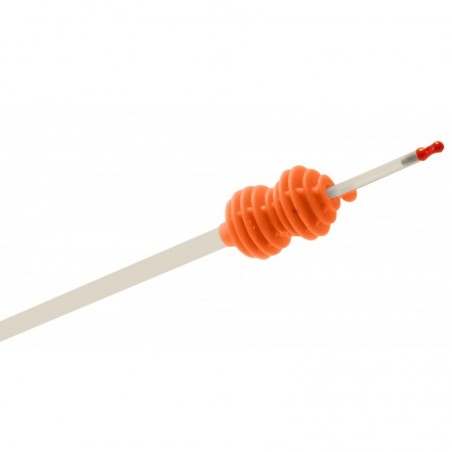The health benefits that many novel fiber sources provide depend mainly on the composition and digestibility of carbohydrates in the small intestine and the fermentability of carbohydrates that enter the large intestine. Determining energy and nutrient digestibility in pigs has been recognized as a good model for estimating nutrient and energy digestibility in humans. The objectives of this experiment were to determine the effect of novel fiber ingredients on the apparent ileal digestibility (AID) and apparent total tract digestibility (ATTD) of gross energy (GE), dry matter (DM), crude protein (CP) and total dietary fiber (TDF) in pigs and to calculate the standardized digestibility of analyzed TDF in four novel fiber ingredients. Twelve growing barrows (initial body weight 20.0±2.8 kg) were surgically fitted with a T-cannula in the distal ileum. After 10 days housed in individual pens to recover from surgery, pigs were transferred to metabolism cages. Pigs were randomly allotted to a replicated 6×5 Youden square design with six pigs and five periods per square. In each period, pigs within each square were fed one of six experimental diets, so there were ten replicate pigs per treatment. A maltodextrin/casein-based control diet was formulated. Five additional diets were prepared by replacing 100 g kg−1 maltodextrin in the control diet with 100 g kg−1 of each of the four novel fiber ingredients or with 100 g kg−1 cellulose. The treatments with fiber ingredients were: (1) resistant starch containing 600 g kg−1 TDF (RS 60) or; (2) 750 g kg−1 TDF (RS 75); (3) soluble corn fiber from corn starch hydrolysis (SCF 70); and (4) pullulan a polysaccharide that is produced via fermentation by Aureobasidium pullulans.
The AID of DM and GE in diets containing novel fiber ingredients was less (P<0.05) than in a maltodextrin diet. Addition of cellulose or pullulan, but not RS 60, RS 75 or SCF 70, reduced (P<0.05) the AID of CP. The average ileal and total tract endogenous losses of analyzed TDF were calculated at 25.25 and 42.87 g kg−1 DM intake, respectively. Addition of novel fiber ingredients to a maltodextrin-based diet had different effects on the AID of DM, CP, GE and TDF. Measurements of the standardized digestibility of analyzed TDF may be a better indicator of TDF fermentability than measurements of AID and ATTD of TDF, because some endogenous metabolites may be analyzed as TDF.

Cervantes-Pahm, S.K., Liu, Y., Evans A. and Stein, H.H. 2014. Effect of novel fiber ingredients on ileal and total tract digestibility of energy and nutrients in semi-purified diets fed to growing pigs. J Sci Food Agric. 94: 1284–1290. DOI 10.1002/jsfa.6405





